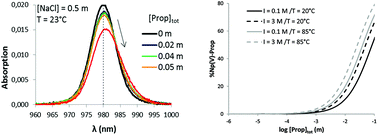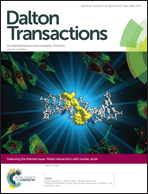Np(v) complexation with propionate in 0.5–4 M NaCl solutions at 20–85 °C†
Abstract
Low molecular weight organics (LMWO; e.g. acetate, propionate, lactate) can significantly impact the speciation and mobility of radionuclides in aqueous media. Natural clay rock formation, considered as a potential host rock for nuclear waste disposal, can contain a significant amount of organic matter. There are less thermodynamic data reported for the complexation of pentavalent actinides with LMWO, especially under elevated temperature conditions, relevant for assessing the long-term safety of disposal options for heat-producing high-level nuclear waste. In the present study, the complexation of Np(V) with propionate is studied using spectroscopic techniques in 0.5–4 M NaCl solutions by systematic variation of the ligand concentration and temperature. Slope analysis shows the formation of the 1 : 1 NpO2-propionate complex (NpO2Prop). The local structure of the NpO2-propionate complex is determined by extended X-ray absorption fine structure spectroscopy, the results of which suggest that propionate binds to Np(V) in a bidentate mode. Using the specific ion interaction theory (SIT), the stability constant at zero ionic strength and 25 °C is determined as log β°1,1 = 1.26 ± 0.03. The stability constants increase continuously with increasing temperature between 20 and 85 °C. The log β0 values are linearly correlated with the reciprocal temperature, indicating ΔrH0m = const. and ΔrC0p,m = 0, allowing the calculation of ΔrH0m and ΔrS0m for the formation of the NpO2-propionate complex using the integrated van't Hoff equation. The thermodynamic evaluation indicates that the reaction is endothermic and entropy driven.


 Please wait while we load your content...
Please wait while we load your content...